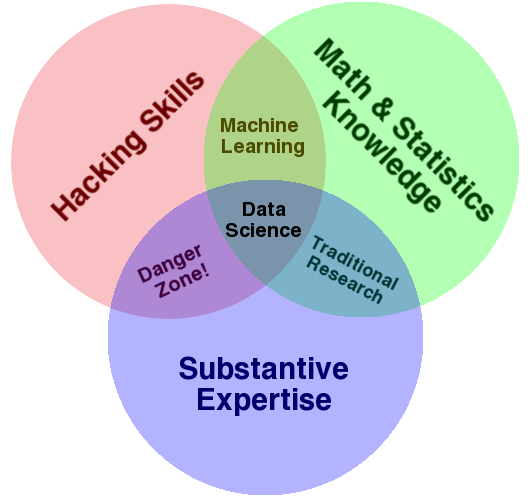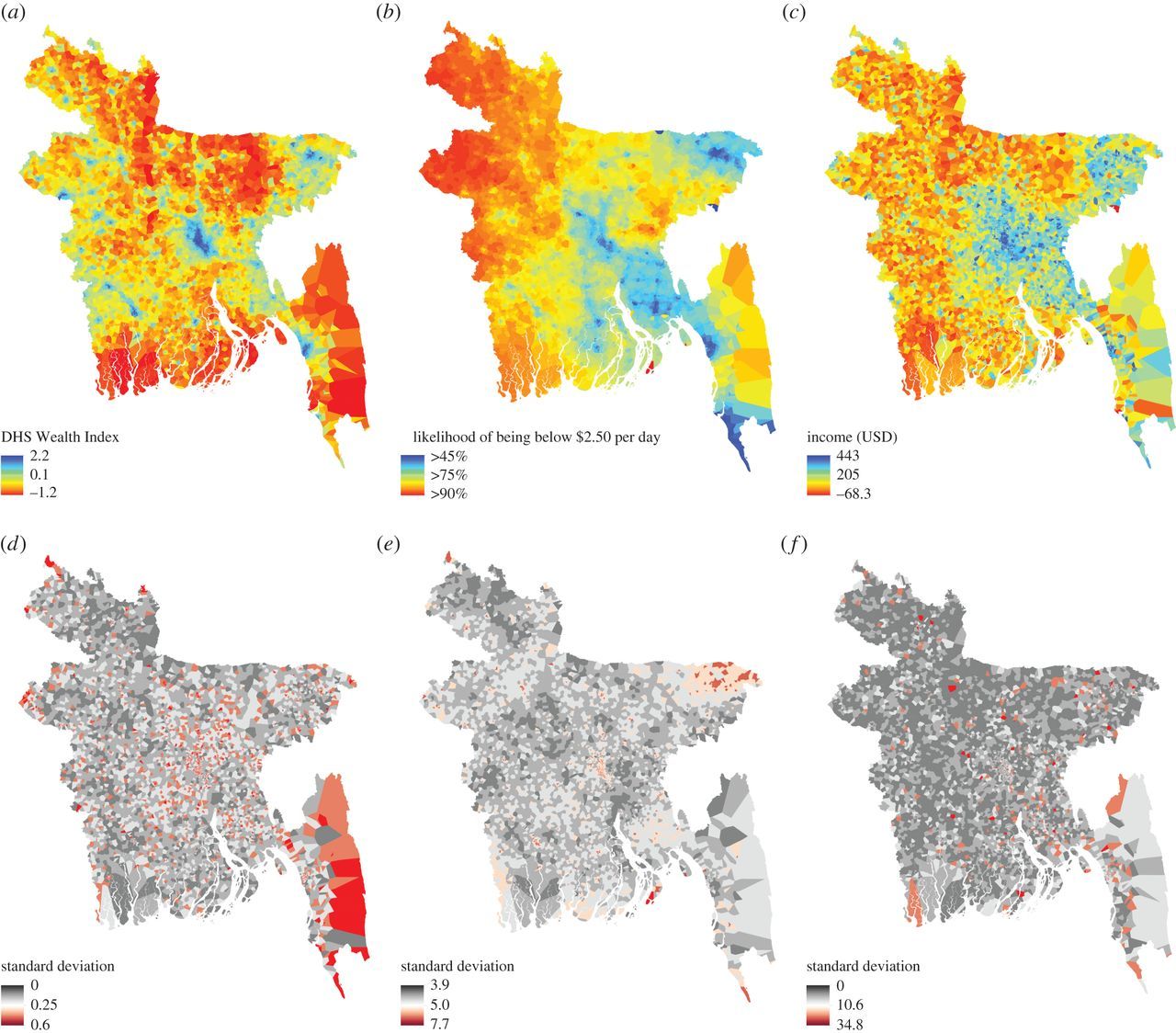1.1 What have I signed up for?
First: What is Data Science?
- Data Science involves a combination of math/statistics and programming/coding skills, which, for our purposes, we will combine with social science knowledge.
- Drew Conway has a nice venn diagram of how these different skill sets intersect.
- Note: This course will not assume prior familiarity with data science in general or coding, specifically. For those brand new to data science, the idea of learning to code may seem intimidating, but anyone can succeed with a bit of patience and an open mind.

Next: What is political science?
- The science of politics, of course! Politics focuses on studying governance and the distribution of power in society, broadly conceived.
- How else might you define politics and political science? What do we study in political science?
1.1.2 Course Goals
This course will provide you with a taste of each of these social science goals, and how the use of data can help achieve these goals. By the end of the course, you should be able to
- Provide examples of how quantitative data may be used to help answer social science research questions.
- Compare and contrast the goals of description, causation, prediction, and discovery in social science research.
- Use the programming language R to import and explore social science data and conduct basic statistical analyses.
- Interpret and describe visual displays of social science data, such as graphs and maps.
- Develop your own analyses and visualizations to understand social science phenomena.
If you are someone that loves data, we hope you will find this course engaging. If you are someone who loathes or finds the idea of working with data and statistics alarming, we hope you keep an open mind. We will meet you where you are. This course will not assume knowledge of statistical software, and there will be plenty of opportunities to ask questions and seek help from classmates and the instructor throughout the semester.
The first section of course will walk people through how to use the statistical program– R– that we will employ this semester.
Will this course help me in the future?
Even if you do not plan on becoming a social scientist or a data scientist, an introduction to these skills may prove helpful throughout your academic and professional careers.
- To become an informed consumer of news articles and research involving quantitative analyses.
- To practice analytical thinking to make informed arguments and decisions.
- To expand your toolkit for getting a job that may involve consuming or performing some data analysis, even if that is not the traditional role.
- Example: Journalism- How 5 Data Dynamos Do Their Jobs
